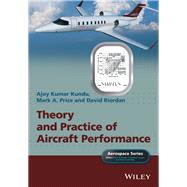Textbook introducing the fundamentals of aircraft performance using industry standards and examples: bridging the gap between academia and industry
- Provides an extensive and detailed treatment of all segments of mission profile and overall aircraft performance
- Considers operating costs, safety, environmental and related systems issues
- Includes worked examples relating to current aircraft (Learjet 45, Tucano Turboprop Trainer, Advanced Jet Trainer and Airbus A320 types of aircraft)
- Suitable as a textbook for aircraft performance courses









